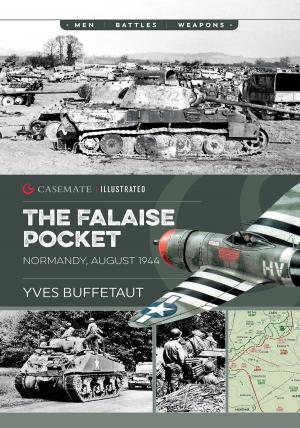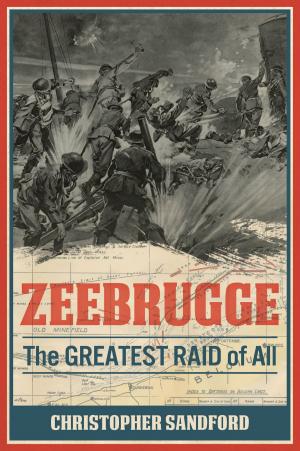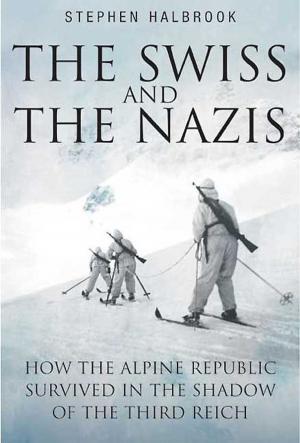Ghost Patrol
A History of the Long Range Desert Group, 1940–1945
Nonfiction, History, Military, World War II| Author: | John Sadler | ISBN: | 9781612003375 |
| Publisher: | Casemate | Publication: | November 19, 2015 |
| Imprint: | Casemate | Language: | English |
| Author: | John Sadler |
| ISBN: | 9781612003375 |
| Publisher: | Casemate |
| Publication: | November 19, 2015 |
| Imprint: | Casemate |
| Language: | English |
The origins of most of the West’s Special Forces can be traced back to the Long Range Desert Group, which operated across the limitless expanses of the Libyan Desert, an area the size of India, during the whole of the Desert War from 1940 to 1943. After the defeat of the Axis in North Africa they adapted to serve in the Mediterranean, the Greek islands, Albania, Yugoslavia and Greece. In the process they became the stuff of legend.
The LRDG was the brainchild of Ralph Bagnold, a pre-war desert explorer (featured in fictional terms in The English Patient) who put all of his expertise into the creation of a new and, by the standards of the day, highly unorthodox unit. Conventional tactical thinking shunned the deep heart of the vast desert as it was thought to be a harsh, inhospitable wilderness where British forces could not possibly survive even less operate effectively. Instead, Bagnold and his colleagues created a whole new type of warfare.
Using specially adapted vehicles and recruiting only men of the right temperament and high levels of fitness and endurance, the first patrols set out bristling with automatic weapons. The LRDG, in a dark hour, was the force which took the fight to the enemy, roving over the deep desert—a raider’s paradise—attacking enemy convoys and outposts, destroying aircraft and supplies, forcing the Axis to expend more and more resources to protect their vulnerable lines.
Their work was often dangerous, always taxing, exhausting and uncomfortable. They were a new breed of soldier, and the Axis never managed to field a similar unit. Once the desert war was won they transferred their skills to the Mediterranean sector, retraining as mountain guerrillas, serving in the ill-fated Dodecanese campaign, then in strife-torn Albania, Yugoslavia and Greece, fighting alongside the mercurial partisans. In addition, the LRDG worked alongside the fledgling SAS and established, beyond all doubt, the value of highly trained Special Forces, a legacy which resonates today.
The origins of most of the West’s Special Forces can be traced back to the Long Range Desert Group, which operated across the limitless expanses of the Libyan Desert, an area the size of India, during the whole of the Desert War from 1940 to 1943. After the defeat of the Axis in North Africa they adapted to serve in the Mediterranean, the Greek islands, Albania, Yugoslavia and Greece. In the process they became the stuff of legend.
The LRDG was the brainchild of Ralph Bagnold, a pre-war desert explorer (featured in fictional terms in The English Patient) who put all of his expertise into the creation of a new and, by the standards of the day, highly unorthodox unit. Conventional tactical thinking shunned the deep heart of the vast desert as it was thought to be a harsh, inhospitable wilderness where British forces could not possibly survive even less operate effectively. Instead, Bagnold and his colleagues created a whole new type of warfare.
Using specially adapted vehicles and recruiting only men of the right temperament and high levels of fitness and endurance, the first patrols set out bristling with automatic weapons. The LRDG, in a dark hour, was the force which took the fight to the enemy, roving over the deep desert—a raider’s paradise—attacking enemy convoys and outposts, destroying aircraft and supplies, forcing the Axis to expend more and more resources to protect their vulnerable lines.
Their work was often dangerous, always taxing, exhausting and uncomfortable. They were a new breed of soldier, and the Axis never managed to field a similar unit. Once the desert war was won they transferred their skills to the Mediterranean sector, retraining as mountain guerrillas, serving in the ill-fated Dodecanese campaign, then in strife-torn Albania, Yugoslavia and Greece, fighting alongside the mercurial partisans. In addition, the LRDG worked alongside the fledgling SAS and established, beyond all doubt, the value of highly trained Special Forces, a legacy which resonates today.















